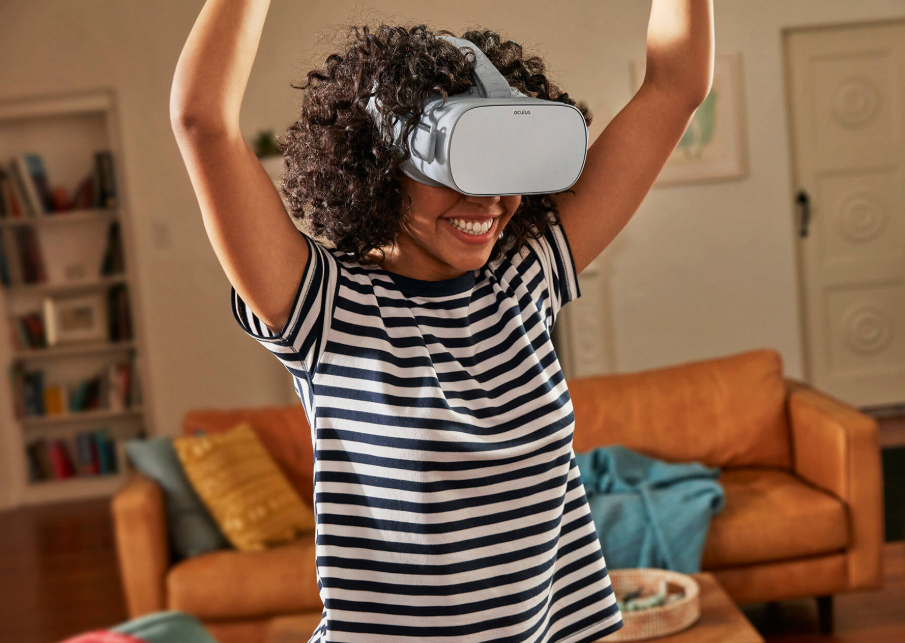January 2, 2019
2018 saw the release of the Oculus GO and the HTC Vive Pro as well as the announcement of the Oculus Quest and the rise of Playstation VR. It’s been a great year for VR with more games and headsets on the way, but what does 2019 have in store for the VR market? We discuss more below and look at the upcoming year for the VR market.
Oculus Quest
The Oculus Quest will be released in Spring 2019 and could potentially have a massive impact on the VR market. As we spoke about in a previous blog, the Oculus quest is a standalone wireless VR headset. Being standalone, the Oculus Quest requires no external hardware but is similar in terms of technical power to the Oculus Rift headset. This means the Oculus Quest is cheaper and therefore more accessible than previous headsets.

Wireless headsets
Whilst a common trend in 2018, in 2019 we’re going to see more and more headsets being wireless. Already we have the Oculus Go which is a completely wireless headset, the HTC Vive has a wireless adapter as an accessory and in 2019 we’ll see the release of the Oculus Quest, which is completely wireless. Wireless VR headsets give users the ability to freely move within their play space without worrying about any wires that may impede their movement.

Eye tracking
Just now, coming to the forefront is eye tracking technology being used in VR headsets. Eye tracking using “foveated rendering” will give VR users a much better degree of visual quality in comparison to traditional VR headsets. Using eye tracking technology helps VR headsets simulate depth of field and focus, providing a more realistic and natural visual experience. For example, with eye tracking one of the annoyances of VR, objects being blurry up close, is no longer an issue. Eye tracking will have a lot of application in social games and business applications with the player characters avatar being able to mimic where the player is looking by changing the position of the eyes of the players character in-game. Using eye tracking technology, interactions with objects and interactions in general within VR, will be a quicker process.
![]()
Inside out tracking
Inside out tracking is tracking the position and motion of VR headsets and their controllers using sensors located on the headset itself. This is different from outside in tracking which uses sensors, like the lighthouses the HTC Vive uses and the sensors the Oculus Rift uses. Inside out tracking technology is already being used by Microsoft Mixed Reality headsets as well as being used in the upcoming Oculus Quest. Using inside out tracking technology allows headsets to have ‘true room-scale’ meaning that a user’s play space is increased in size in comparison to outside in tracking.
Standalone VR
With the Oculus Go along with the Lenovo Mirage Solo, standalone VR headsets have come into prominence these past couple years. With the Oculus Quest, more and more new headsets in the future will be standalone. Being a standalone VR headset means that no other accessories or other external hardware (such as a phone or PC) are needed to power the VR headset. This means standalone headsets are cheaper and more portable, therefore more appealing to consumers with a lower budget. Standalone headsets though are not very powerful and aren’t able to play a lot of mainstream VR games.

With VR growing as a market and the Oculus Quest poised to be a major disruption for VR, we’ll continue to see VR power some amazing games and business applications such as those seen in the healthcare and advertising sector. We look forward to seeing the future of the VR market.
If you have an idea you want created get in touch with us and we can bring it to life. Whether it’s a quick prototype, a full product or even just to brainstorm, our team will be here to help. From the beginnings of your prototype to the final product we can support you with professional advice and delivery.





